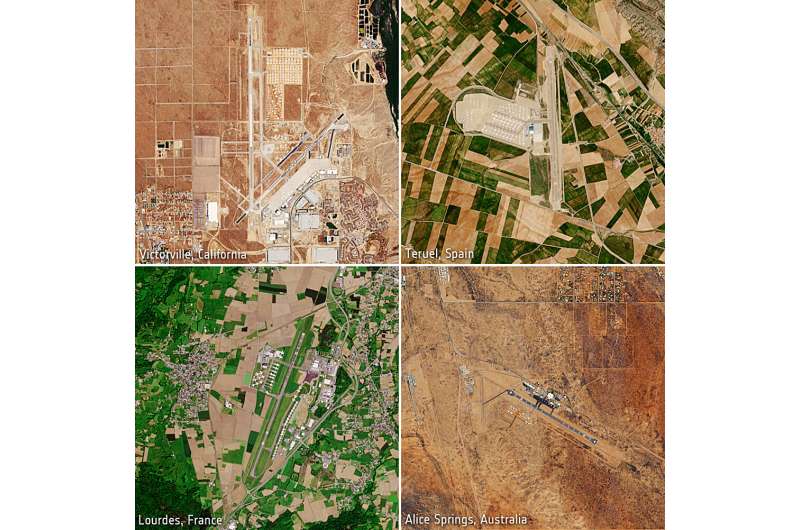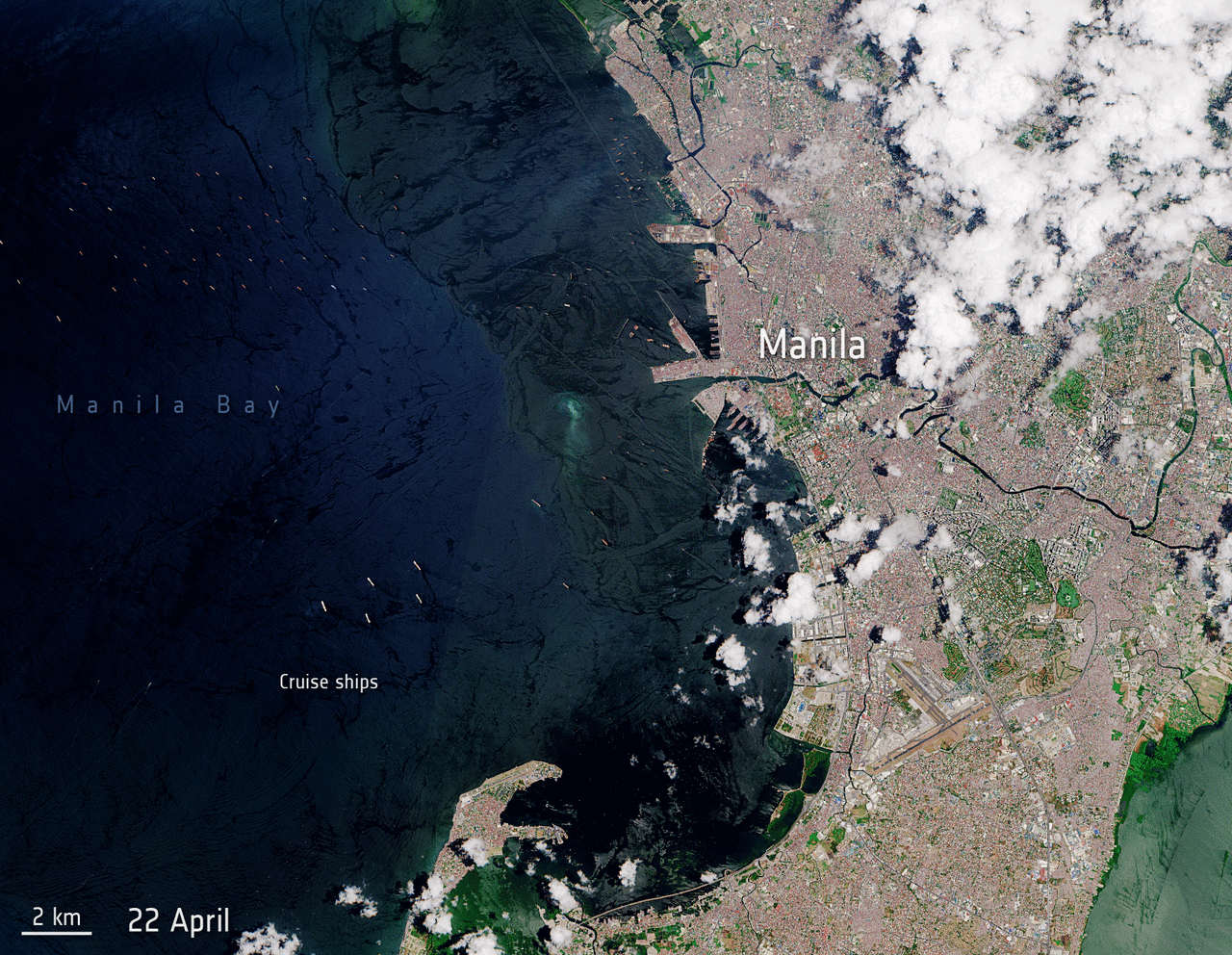Parking in a pandemic

The coronavirus pandemic has brought the tourism and travel industry to a near-standstill, with nationwide lockdowns significantly impacting the aviation and maritime industry worldwide. Satellite images, captured by the Copernicus Sentinel-2 mission, show parked aircraft and anchored vessels in times of COVID-19.
Global aviation is facing its battle to survive, with most flights grounded since March owing to travel restrictions in place to contain the coronavirus pandemic. According to aviation industry researcher Cirium, the number of passenger jets in service is the lowest it has been in 26 years.
Managing large-scale storage poses a challenge for the industry, as airlines hunt for space on the ground for storage facilities. Taxiways, hangers and even runways at major airports around the world are being transformed into parking spaces for planes. These images captured by the Copernicus Sentinel-2 mission show the numerous parked planes on runways – even in remote airports such as Alice Springs in Australia.
Airport storage facilities are sometimes referred to as 'boneyards' owing to airlines sending retired aircraft to the desert. These boneyards are often located in dry and arid places as the climate means planes can be preserved in excellent condition before returning to service or being reused.
Teruel Airport in the Aragon province in Spain was built with this purpose in mind. According to a recent report in Reuters, the airport is hosting around 100 aircraft and the number of planes arriving per week to be parked in the airport has doubled since the start of the global pandemic.

Another sector heavily affected by the pandemic is the cruise ship industry. Major cruise lines have suspended operations to mitigate the spread of COVID-19. Cruise ship operators around the world have struggled to find open ports to disembark, while some were forced to stay anchored at sea for an extended period of time.
Manila Bay, in the Philippines, has been transformed into a parking lot for cruise ships. In this animation, around 20 vessels can be seen anchored off the coast of Manila Bay. Captured by the Copernicus Sentinel-2 mission, this animation contains a sequence of images captured on 22 April, 2 May and 22 May 2020.
According to Reuters, the cruise ships have been asked to wait in the Manila Bay anchorage area with hundreds of seafarers remaining on board awaiting clearance in order to return home. The famous Diamond Princess and Ruby Princess vessels are said to be among the fleet.
In order to learn more about space applications and the socio-economic impact of COVID-19, ESA and the European Commission recently unveiled the new 'Rapid Action Coronavirus Earth observation' dashboard, also known as RACE. The platform uses Earth observation satellite data to measure the impact of the coronavirus lockdown worldwide, and monitor post-lockdown recovery.
Provided by European Space Agency



















